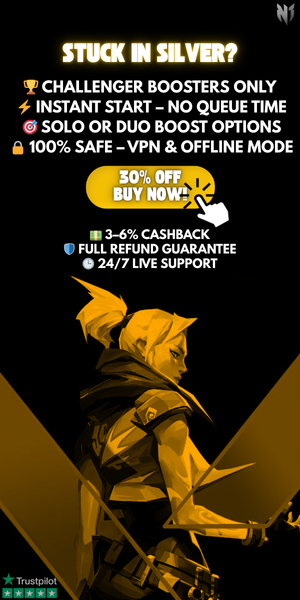ADR in Valorant: Damage Per Round Quietly Shapes Your MMR
While players often chase flashy stats like kills or Combat Score, ADR (Average Damage per Round) remains one of the most underrated metrics in Valorant's ranked climb. Unlike pure fragging stats, ADR shows how consistently you impact each round, even without getting the final blow.
But how much does ADR really affect your hidden MMR and climb potential? This guide breaks down why ADR matters more than you think and how you can leverage it for smarter matchmaking gains.
What Is ADR in Valorant?
ADR stands for Average Damage per Round and represents the average amount of damage you deal across all rounds in a match. It includes:
- Damage from kills
- Chip damage to enemies
- Damage from utility like Raze grenades or Viper mollies
Even if you don’t secure the kill, every point of damage contributes to your team’s success—especially when it leads to easier trades or map control.
Why ADR Is a More Honest Metric Than Kills
Kills can be misleading. You might secure 20+ kills but many of them may come from eco rounds or exit frags. ADR, however, rewards consistent pressure:
- High ADR = constant threat
- Low ADR = inconsistent engagement
Unlike KDA or frag count, ADR paints a fuller picture of your impact on enemy teams.
How ADR Relates to MMR
While Riot doesn’t officially confirm every detail of the MMR algorithm, community data shows that ADR correlates strongly with win impact:
- High ADR players are more likely to secure round wins
- Constant damage improves round differential, a known MMR factor
- ADR assists in clutch wins and trade setups
Especially in tight games where the outcome isn’t obvious, ADR can tip the scale in your favor and indirectly boost your hidden rating.
When ADR Truly Matters
🟢 Close Matches
Every point of damage counts when rounds are neck-and-neck.
🟢 Eco and Bonus Rounds
Even if you don’t win, dealing high damage weakens the enemy economy and gives your team the edge in the following round.
🟢 Utility Users
Players who use agents like Brimstone, Killjoy, or Fade can boost their ADR through well-timed abilities.
🟢 Supportive Roles
ADR lets you measure impact even if you aren’t fragging. You’re still chipping away at enemies and enabling trades.
Tips to Improve Your ADR
✔️ Pre-fire common angles: Small chip damage builds up.
✔️ Use your utility aggressively: Damage-over-time abilities build consistent ADR.
✔️ Avoid early deaths: More time alive = more time to deal damage.
✔️ Spray for team damage, not just kills: Help your teammates clean up easily.
Key Takeaway
Your ADR tells a story your KDA can’t. It’s about how much you pressure the enemy per round, how often you soften targets for trades, and how reliable you are in engagements.
If you want to climb faster in ranked, keep an eye on your ADR. High damage—even without top fragging—means consistent value, and that's what Riot's matchmaking algorithm really looks for.
Track Your True MMR with MMRValorant
Want to know how stats like ADR influence your real ranking behind the scenes? Visit mmrvalorant.com to uncover your hidden MMR, monitor your performance metrics, and understand what’s really holding you back. Play smarter, not just harder.
Tags

Author



